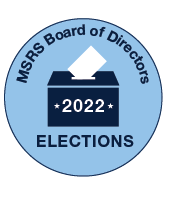
Three positions are up for election:
2 Positions
General Employees or
Unclassified Retirement Plans
1 Position
State Patrol Retirement Plan
|
Voting Deadline is Tuesday, March 1, 2022
 |
|
• If voting by mail, the ballot must be postmarked by the deadline date.
• If voting online, the ballot must be submitted by 11:59 p.m. on that date.
Ballots will be tabulated on March 17.
Winners will be announced on the MSRS website following the election certification at the March Board meeting. New Board members begin their four-year terms on May 2, 2022.
|
The Minnesota State Board of Investment (SBI) reported a 30.3% investment return for the fiscal year ending June 30, 2021. This exceptional return is the largest investment return earned since 1984 and has rapidly improved the financial health of MSRS pension plans. For example, the 2020 analysis suggested that the General Plan would reach 100% funding in 2033; the return from 2021 expedited that by twelve years and the plan reached full funding this year.
While the 2021 investment performance is above the 7.5% assumed rate of return used to value the funding of our plans, the investment market projections are suggesting that returns in the next twenty-year period will be less favorable.
The MSRS Board of Directors reviewed the preliminary funding results, recommendations from the actuary regarding future investment projections, national trends, and historic investment performance of the SBI to determine whether to pursue any changes during the 2022 legislative session.
Based on the recommendations of the actuary and reviewing the other factors, the MSRS Board of Directors has proposed reducing the assumed rate of return to 7.0% during the 2022 legislative session.
Key points to understand regarding the proposed change:
- The actuaries use the return assumption to calculate current and future plan liabilities. It does not change how SBI invests the pension funds.
- Because of the strong financial position of the plans, this change will not require any benefit structure or contribution rate changes at this time.
- During less favorable investment markets, a lower assumption increases the probability of achieving or exceeding the expected return over the life of the plan.
- Pensions plans are designed to provide lifetime income to all plan members — current retirees and current workers. They must be sustainable during all phases of life for workers and retirees.
View the MSRS FY2021 financial and actuarial reports on our website.
Below is a summary of the factors considered when assessing the financial health of a pension plan. For more details, view online the full MSRS Winter 2022 newsletter.
1. Current Financial Health
Current health is measured by the funded ratio on June 30 of each year. This measurement is a ratio of the calculated liabilities versus assets on hand. Another way to think of this measurement is having enough money in your checkbook to pay your expected bills.
For example, the General Employees Retirement Plan (General Plan) has $17.4 billion held in trust to pay $15.6 billion in liabilities, resulting in a funded ratio of 111.5%. In 2020, the funded ratio of the plan was 91.25%.
2. Contribution Rates
Pension plans are designed to be “pre-funded”, which means that the current contributions collected are enough to pre-fund benefits earned by current workers. When there is a contribution deficiency, benefits must be reduced or contributions must be increased to ensure future benefits are properly funded. A contribution sufficiency means that current contributions are enough to pre-fund future benefits within the funding period. Having a sufficiency provides a cushion to absorb potential market downturns
or future assumption changes.
3. Current Funding Projections
Current projections indicate that MSRS plans are either fully funded or heading toward the goal of 100% funding before the 2048 deadline. Legislation passed in 2018 and positive market returns have greatly improved the funding outlook of MSRS pension plans.
|